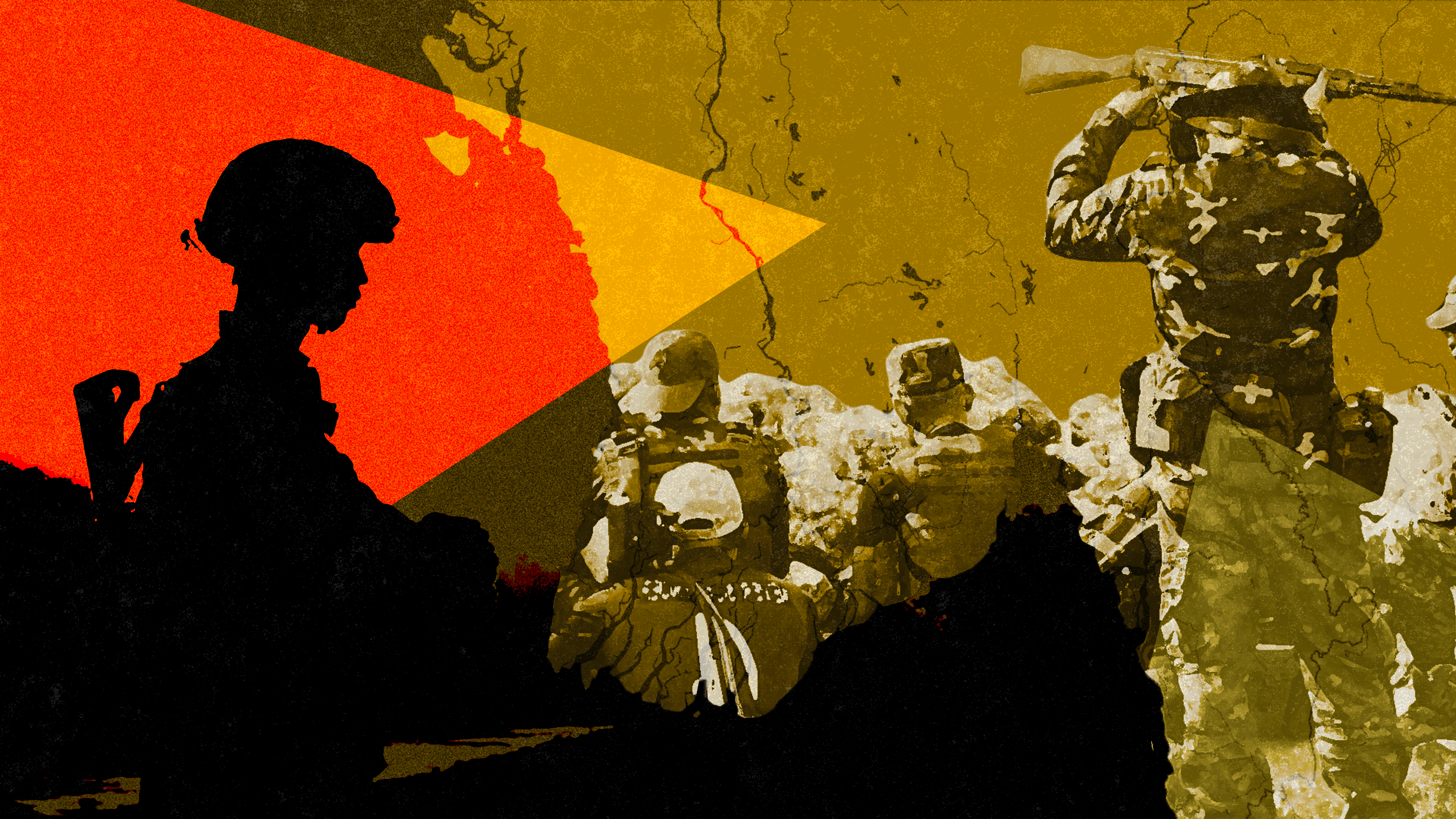Paragliders: The army's lethal new weapon in Myanmar's civil war
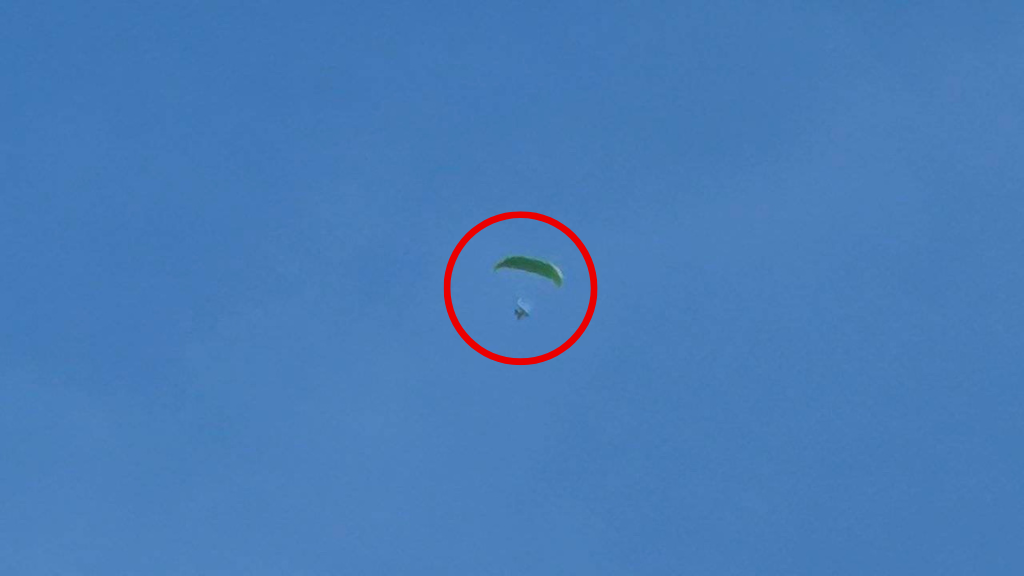
Paramotor attacks have ramped in Myanmar in recent months
- Published
It was a Monday night in Myanmar's Chang U township in the central Sagaing region, where nearly 100 people had gathered to mark Thadingyut, the festival of the full moon.
Some held candles at the event, which doubled as both a celebration and a protest against the military, which seized power in 2021, plunging the country into a bloody civil war.
But the celebration soon turned into horror as a motorised paraglider - known locally as a paramotor - flew overhead and dropped bombs onto the crowd.
The attack lasted just seven minutes, but at least 26 people died as a result and dozens more were injured.
"Initially, I thought the lower part of my body had been severed," one 30-year-old who was at the gathering told news agency Reuters.
He managed to make his way into a nearby ditch and hid there until his friends pulled him out.
"This is mass murder," he said of the attack. "They are committing it openly."
It's one of many such airstrikes carried out this year by Myanmar's military to defeat armed resistance groups.
It is also a clear sign that the paramotor - a low-tech but lethal weapon - has become a fixture in the junta's brutal aerial campaign to regain control of the country.
What is a paramotor?
There are different variations of paramotors, but generally, the most common type sees a pilot suspended from a motor-powered paraglider that they can steer.
Each paramotor can carry an average of 160kg (350lb) - meaning it can comfortably fit a paratrooper, as well as several small bombs. According to the UN, these paragliders typically carry 120mm bombs which weigh up to 16kg each.
Their small structure and ability to fly at low altitude mean they can fly much closer to a target than an aircraft could. Pilots drop bombs on their targets by hand.
Experts say these paramotors - equipped with GPS - are able to accurately hit their targets from altitudes below 1,000 ft (300m) - and a single paramotor can fly for about three hours, running on regular fuel.
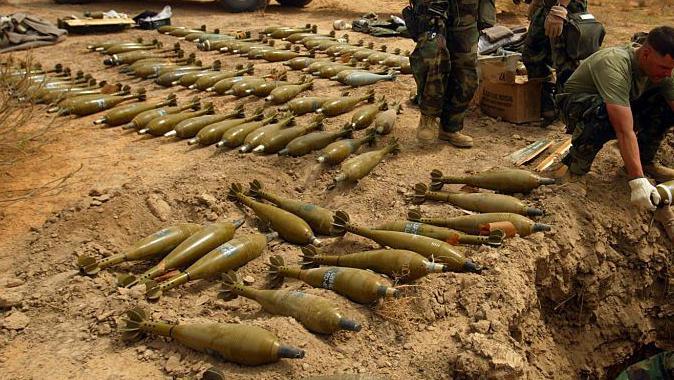
120mm mortar rounds are small enough to be carried by paramotors
Military sources say paratroopers can be trained in a matter of days, rather than years, unlike pilots needed to drive a conventional aircraft. Multiple air bases and training schools have been set up to train such paratroopers - and many attacks happen in regions where such bases are located.
The paramotors are also significantly cheaper to make and maintain - which is one of the main reasons why they've become a mainstay in the Burmese military, say military sources and defence groups. These paramotors are believed to be produced at Myanmar's state-owned Heavy Industry Number 10, which is also responsible for making a large amount of the country's aircraft parts.
But they aren't without their drawbacks. Their ability to fly low and their conspicuousness means they can also be easily hit by gunfire from the ground - so they are more commonly used at night.
They also move slowly, up to 65km/h (40mph), say experts.
Paramotors also can't fly in severe weather conditions - and are limited by how high they can fly. The loud sound of the aircraft's motor means people can also hear them coming.
"[During attacks] I can hear the sound of the engine crossing over my village," one rescue worker in Sagaing had earlier told Amnesty International. "The paramotor attack noise is like a chainsaw."
How commonly are they used?
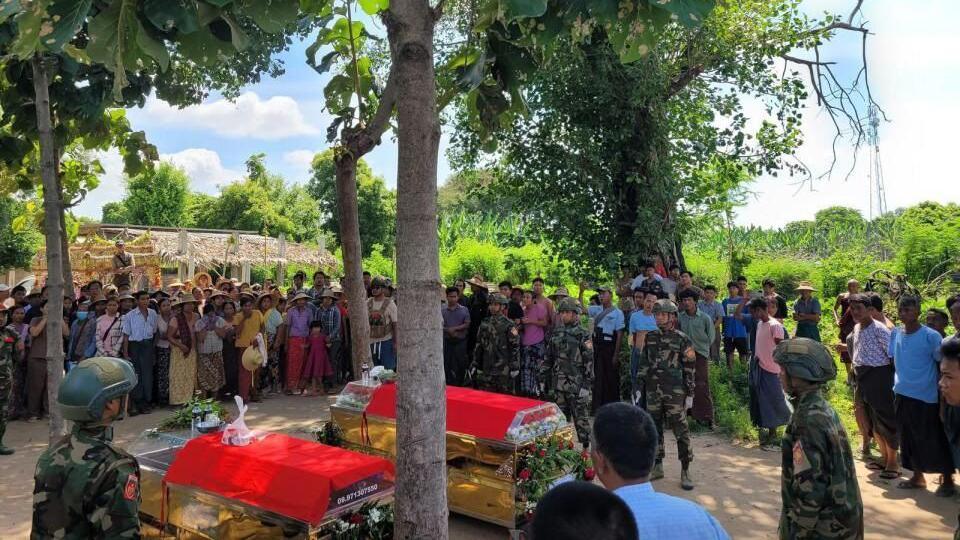
More than two dozen people were killed in Monday's airstrike
While Monday's attack is the most lethal to date, it is by no means the first. The first known use of such paramotor attacks took place on Christmas Day in 2024 in the central Myingyan district - a resistance stronghold.
In January 2025 alone, eight such attacks were recorded in the townships of Taungtha, Paletwa and Sagaing, resulting in nine deaths, according to global monitoring site Acled.
And as the junta enters its fourth year of fighting, its aircraft fleet is likely to be severely depleted, or would require high costs to maintain if they are damaged - making paramotors a much more affordable option.
"They are cheap, quick to deploy and require minimal pilot training... [they] bridge the gap between drones and aircraft, offering longer range and greater payload capacity than drones at a fraction of the cost of helicopters," Min Zaw Oo from the Myanmar Institute for Peace and Security told the BBC.
"Their growing use reflects the junta's shift toward low-cost aerial dominance amid aircraft losses and resource constraints."
However, they are no replacement for conventional aircraft, especially in large rebel strongholds which are equipped with advanced air defence systems, according to news site The Irrawaddy.
So they are used instead in areas where resistance forces have less of a foothold and may not have the weapons required to shoot them down.
One of the few ways residents in such places can defend themselves from such attacks is to hide under an air raid shelter.
One Sagaing resident had earlier told the BBC that a bunker that could shelter a family would cost around 500,000 kyats (£178; $239) - in a country where the daily minimum wage is around 4,800 kyats.
Min Zaw Oo adds that the military has also been "experimenting with gyrocopters, which can reach further targets with heavier payloads and more advanced onboard systems".
What is the situation like now in Myanmar?
Thousands have been killed and millions displaced since a military coup in 2021, which triggered a civil war with armed resistance groups and ethnic militias.
And though the junta lost large amounts of territory to rebel groups, it has in recent months been making significant gains, through an especially bloody campaign of airstrikes and heavy bombardment.
It's also received a significant amount of support - and equipment - from China, which has increasingly intervened to protect its economic interests in the country, according to think tank the Stimson Centre.
"China's support for the junta has not only not abated, but expanded, as it desperately tries to shore up an economically incompetent and militarily over-stretched junta," it said in a report.
"The most important assistance that Beijing is providing is in the military realm, including arms sales, drone technology, the deployment of technicians to defence industries, and the blocking of dual-use exports to the opposition."
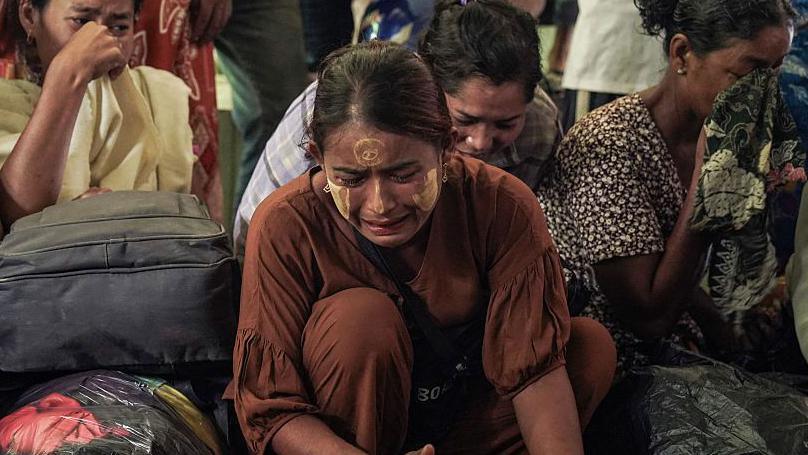
Thousands have died since the military launched a coup in 2021
Beijing has also been putting pressure on rebels along its border to stop supplying weapons - including unmanned aerial vehicles (UAV) - to opposition groups, which are heavily dependent on such weapons.
This two-pronged approach has left the rebels weakened - though they still hold a significant claim over about half of the country.
In the face of this fracturing conflict, it is civilians on the ground who face more suffering in this new wave of paramotor terror against soft targets.
Related topics
- Published8 October
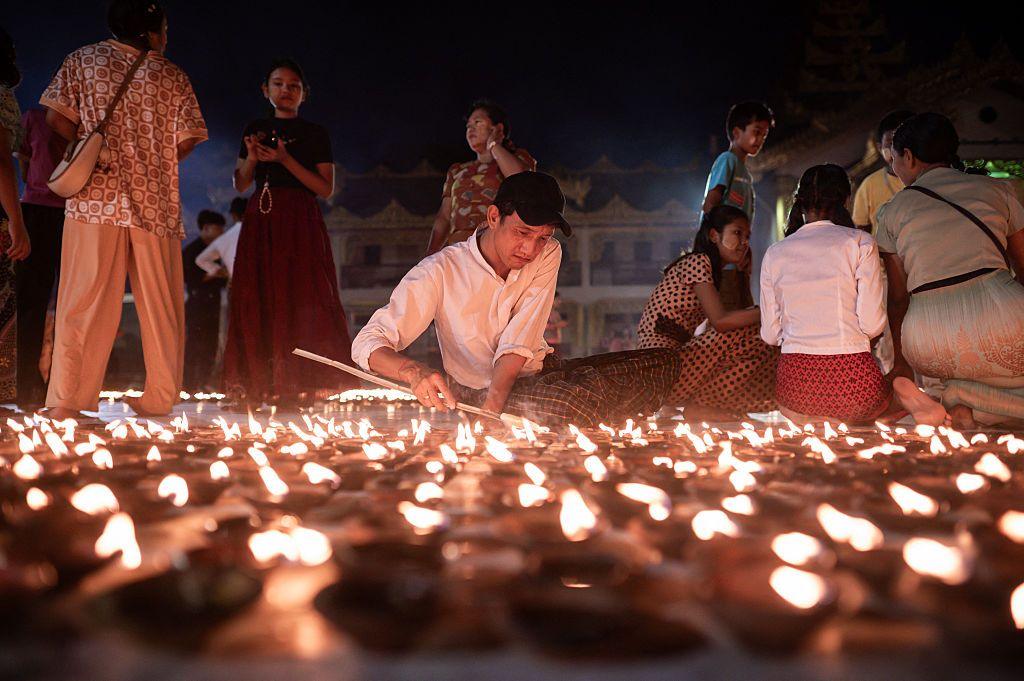
- Published10 November 2024
